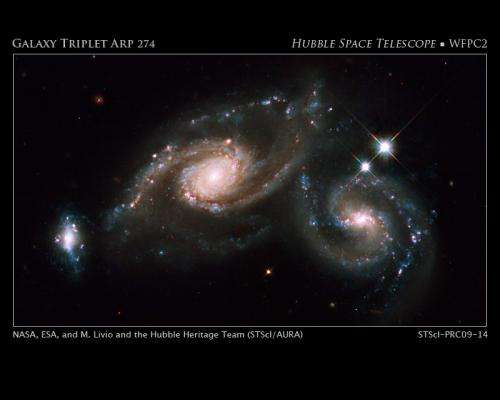How a Hubble image goes from photons to finished beauty

How does raw data from the Hubble Space Telescope end up to become a finished gorgeous color image, like the one of Arp 274, above? It's an interesting process, because the cameras on Hubble do not take color pictures.
The Hubble team released a video today showing the process of creating an image of Arp 274:
Color images from the spacecraft are assembled from separate black & white images taken through color filters. For one image, the spacecraft has to take three pictures, usually through a red, a green, and a blue filter and then each of those photos gets downlinked to Earth. They are then combined with software into a color image. This happens automatically inside off-the-shelf color cameras that we use here on Earth. But Hubble has almost 40 color filters ranging from ultraviolet ("bluer" than our eyes can see,) through the visible spectrum, to infrared ("redder" than what is visible to humans.) This gives the imaging teams infinitely more flexibility, allowing them to eke out whatever science information they are looking for, as well as, sometimes, allowing them to take a little artistic license.
Source: Universe Today





















